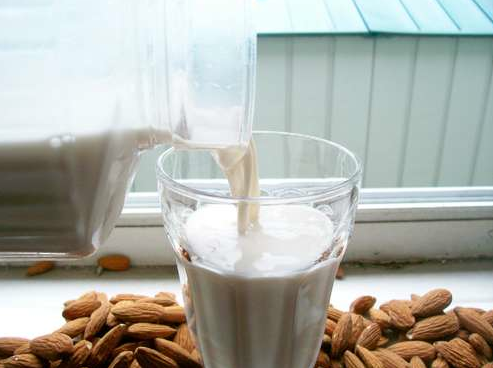 The food industry chalks milk up as an excellent source of calcium, ultimately contributing to bone health and growth, and preventing the onset of osteoporosis. Scientific studies, however, prove the opposite.
The food industry chalks milk up as an excellent source of calcium, ultimately contributing to bone health and growth, and preventing the onset of osteoporosis. Scientific studies, however, prove the opposite.
In the 2003 American Journal of Clinical Nutrition, Harvard researchers reported that they have found no link between high milk consumption and bone strength.
Amy Lanou, Ph.D. and nutrition director for the Physicians Committee for Responsible Medicine in D.C., says, “There is really no requirement for dairy products in the diet. The countries with the highest rates of osteoporosis are the ones where people drink the most milk and have the most calcium in their diets. The connection between calcium consumption and bone health is actually very weak, and the connection between dairy consumption and bone health is almost nonexistent.”
In his book, Diet and Health: New Scientific Perspectives, Dr. Walter J. Veith says, “In our modern society the notion exists that dairy products are essential for maintenance of calcium levels and prevention of osteoporosis. Vegan diets are often criticized on the grounds that they will lead to severe calcium depletion. In fact there is no evidence that this is the case and if anything, the reverse is true, as osteoporosis is more prevalent in Western countries where an abundance of milk is consumed than in countries where vegan diets are more common. There is also no clear evidence that dietary calcium supplementation will show the rate of bone loss in postmenopausal women, a position also held by the US department of Health and Human services.”
Dr. T. Colin Campbell, author of The China Study, initiated studies that examined the role in the diet of casein, which makes up 80% of protein of milk. The studies proved that a higher casein intake “promotes breast cancer” and “operates through a network of reactions that combine to increase cancer.” While Campbell experimented on rats, he discusses elaborately in his book why these findings are absolutely relevant to the human experience.
So, with all of this information out there, why is it that society continues to value milk as a health-generating food?
Humans are the only species that consumes the milk of another species, let alone consuming it beyond infant-hood. Make no mistake—humans aren’t engineered to process cow’s or goat’s milk, which is why many people develop lactose intolerance in their teen and adult years due to their bodies no longer producing the enzymes that digest milk, the further displaced they grow from their breast feeding years. Goat’s milk, however, is the easiest for humans to digest, because goat milk proteins are most similar to those found in human milk. Goat’s milk (and sheep’s milk) are also less likely to contain additives and hormones. Additionally, goats and sheep are also closer to humans’ size than cows. These similarities make goat’s and sheep’s milk the relatively best choice.
In view of this information, does milk have its place in our diet? In its raw, unpasteurized, unadulterated form, milk can indeed be a great tool for those who continue the raw food diet while incorporating non-vegan options. If you have access to raw milk and cheese, opt for raw versus its pasteurized counterpart. While pasteurization intends to kill any harmful bacteria, molds, yeasts, and viruses, it also destroys good bacteria and other microorganisms that can benefit your body and digestive system.
Raw goat/sheep cheese is increasingly easier to find in most grocery stores, and there are many different kinds from which to choose. Explore your options and see if raw milk is right for you.






